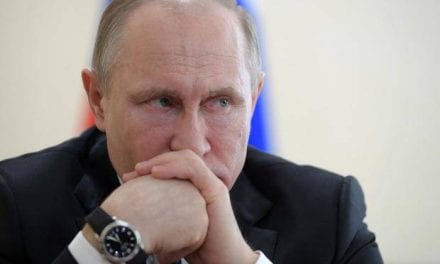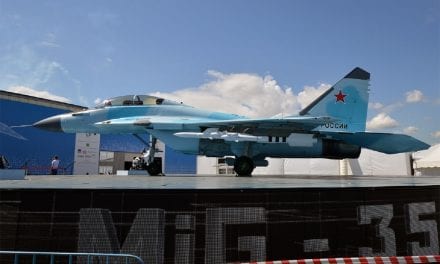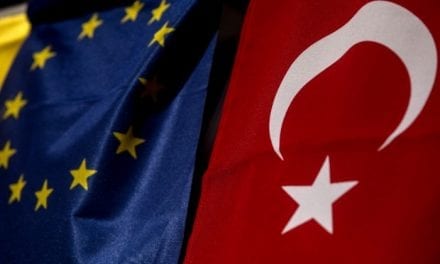By Ala Creciun Graff, Baltimore Sun
Last week, Vladimir Putin was inaugurated to his fourth presidential term in Russia. What will his next six years in office bring?
This is a difficult question, not least because most Western readers learn about Russia in short and transient news bites. Often lacking in context and interpretation, these quick takes do not yield a systematic understanding of Russia’s long-term political direction. Yet, Vladimir Putin functions in long-term historical categories. In recent years, he has increasingly invoked them to achieve political goals. To grasp Russia’s political vector under Mr. Putin, we need to be more attuned to his use of history.
In November, at the Livadia Palace, near Yalta, Crimea, Mr. Putin unveiled a monument to Russia’s Tsar Alexander III, who ruled from 1881 to his death in 1894. The monument is as symbolic as its location. The Livadia Palace had once been the summer residence of the Romanov dynasty — Russia’s ruling family. It was also the venue of the 1945 Yalta Conference, where U.S. President Franklin D. Roosevelt, British Prime Minister Winston Churchill and Soviet leader Joseph Stalin decided the fate of post-war Europe. In 2014, Russia annexed the Crimean Peninsula, provoking international condemnation. By unveiling a contemporary monument to a Russian tsar in Crimea, Moscow seeks to signal historical continuities with the peninsula.
This was also Mr. Putin’s first monument commissioned to a Russian tsar, and the choice of tsar is telling. Alexander III is known for abandoning Russia’s Europeanizing course and turning inward in search of native political values, traditions and norms. Among historians, Alexander has a controversial reputation. He was a nationalist who held anti-Semitic views, but he also presided over Russia’s economic boom during the 1880s.
More than a century later, Alexander III came to political and cultural relevance again with 1998 film “The Barber of Siberia,” directed by Russia’ pre-eminent director, Nikita Mikhalkov, who also played the imposing role of Alexander III. Subtly, the film proposed Russia’s monarchic tradition as a compelling alternative to the tired Soviet ideology.
The state-sponsored erection of the Alexander III monument in Crimea confirms Russia’s historically inspired political course under Vladimir Putin. While the monument sparked debate regarding artistic detail, the unveiling ceremony and, more so, Mr. Putin’s speech during it, were loaded with subtle symbolism.
In Livadia, Vladimir Putin staged his entrance to the tune of the Imperial Russian anthem, “God Save the Tsar.” Eulogizing Alexander III, Mr. Putin drew unmistakable parallels with his own projected image as a “prominent statesman, patriot… with a profound sense of personal responsibility for the fate of the country.” The attendees of the ceremony may have wondered if this sense of personal responsibility rationalizes Mr. Putin’s fourth term in office or his highly centralized and personalized leadership style.
The calamities of the Soviet collapse planted Mr. Putin’s single-minded aim to position Russia as “a strong and sovereign nation” — terms in which he describes Alexander’s Russia in the 1880s. Much like Alexander, Mr. Putin wants to see this nation stand “not only on economic and military might, but on traditions; a great nation should preserve its native character.” Praising Alexander III’s rule as “a time of national revival, veritable rebirth of Russian art, literature, music, education and science,” Mr. Putin aims for a similar legacy for himself.
Mr. Putin sees national revival as an opportunity to re-assert Russia on the global stage. Russian nationalism has long defined itself as much by its native character as by opposition to Europe — something that comes across as hostile in Europe. Indeed, the aim to raise Russia’s authority in the world has been one of Mr. Putin’s primary objectives. Praising Alexander’s peaceful relations with Europe, Mr. Putin asserted that Alexander III “procured peace not with concessions, but with just and unwavering firmness.” Russia’s posture of firmness is familiar to the world today. Praising Alexander’s determination to “defend the interests of [Russia] in a direct and open way,” Mr. Putin rationalized Russia’s own diplomatic posture in recent years. This policy, in the 1880s as presumably today, “secured the rise of Russian influence and authority in the world.”
So, what does this tell us about Mr. Putin’s next six years in office? In one sentence, as Mr. Putin summed up Alexander’s rule, this will be “a time of return to our roots and historical legacy.” At home, this will mean a continuing centralization and personalization of governance. For Russia’s relations with the West, this will likely mean a continuing turn inward and a defiance of the Western-style governance in favor of native, historical traditions. As Western political traditions experience critical strain, Mr. Putin seeks to present an influential alternative that is gaining traction in post-Imperial, post-Soviet, Eurasian space and arguably beyond.
On May 5th, two days before Mr. Putin’s inauguration, thousands of young Russians marched in Moscow shouting “Down with the Tsar!” It pays to know which tsar in particular. Understanding Vladimir Putin’s Russia requires an attuned sense for historical meanings. Without such longue durée perspectives, Russia’s actions, impulses and fears will remain incomprehensible and Western ties with Moscow, ever-fragile.
Ala Creciun Graff is a doctoral student in Russian history at the University of Maryland, College Park.


















